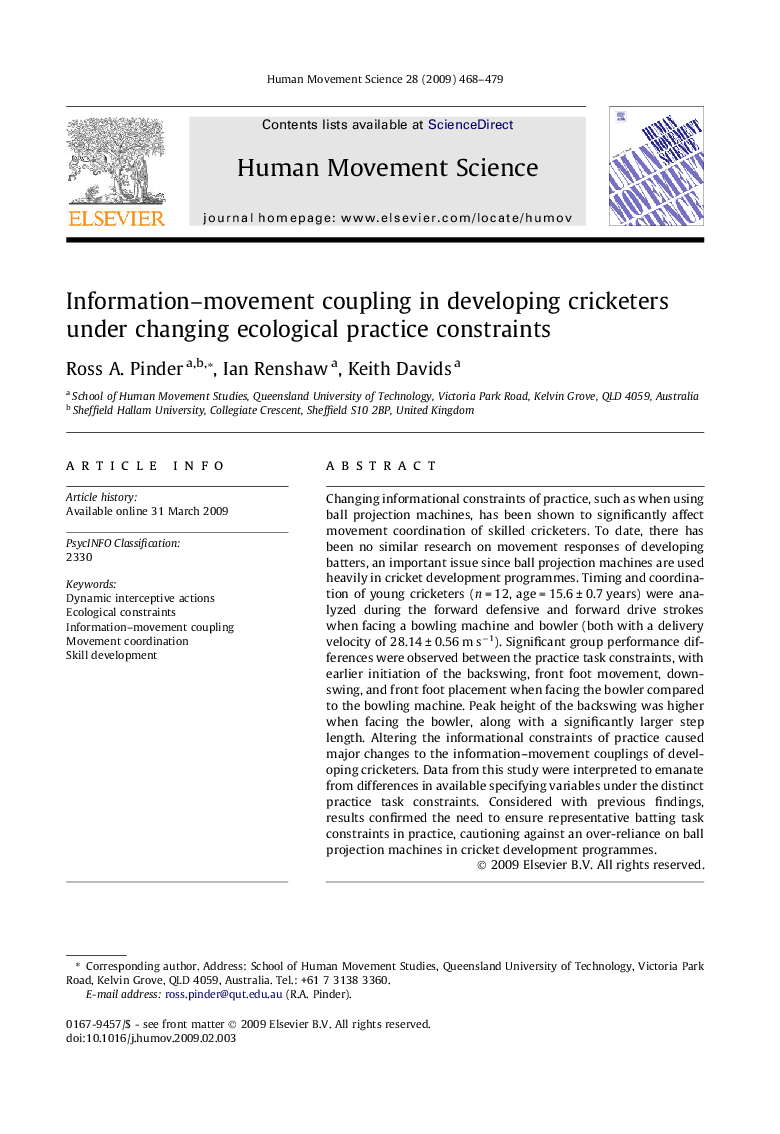| Article ID | Journal | Published Year | Pages | File Type |
|---|---|---|---|---|
| 928793 | Human Movement Science | 2009 | 12 Pages |
Changing informational constraints of practice, such as when using ball projection machines, has been shown to significantly affect movement coordination of skilled cricketers. To date, there has been no similar research on movement responses of developing batters, an important issue since ball projection machines are used heavily in cricket development programmes. Timing and coordination of young cricketers (n = 12, age = 15.6 ± 0.7 years) were analyzed during the forward defensive and forward drive strokes when facing a bowling machine and bowler (both with a delivery velocity of 28.14 ± 0.56 m s−1). Significant group performance differences were observed between the practice task constraints, with earlier initiation of the backswing, front foot movement, downswing, and front foot placement when facing the bowler compared to the bowling machine. Peak height of the backswing was higher when facing the bowler, along with a significantly larger step length. Altering the informational constraints of practice caused major changes to the information–movement couplings of developing cricketers. Data from this study were interpreted to emanate from differences in available specifying variables under the distinct practice task constraints. Considered with previous findings, results confirmed the need to ensure representative batting task constraints in practice, cautioning against an over-reliance on ball projection machines in cricket development programmes.
